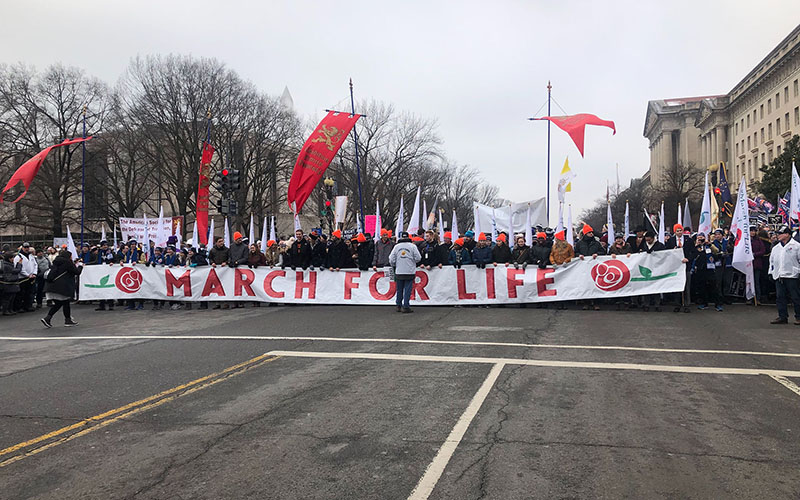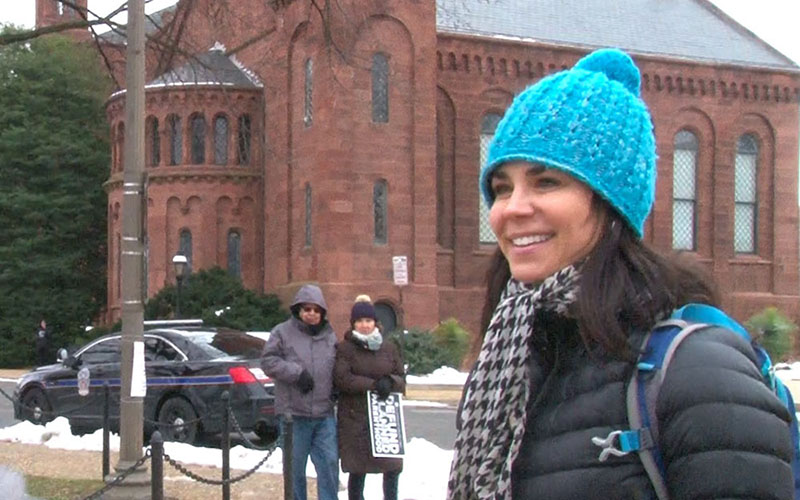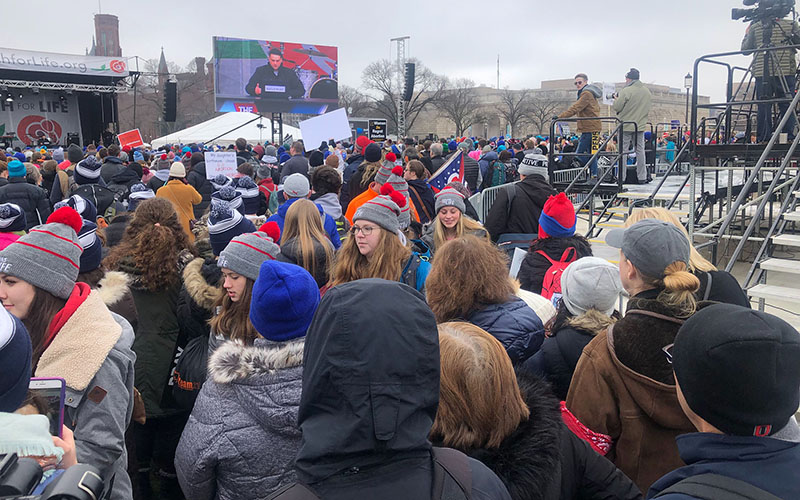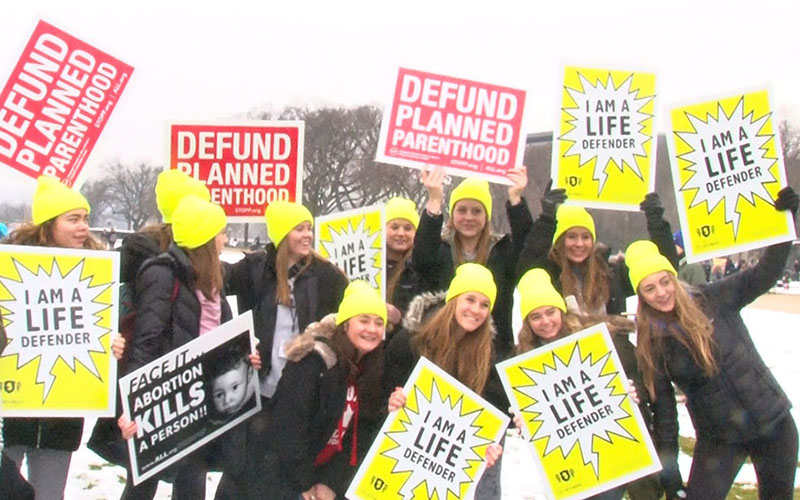
The March for Life encountered only a handful of counter-protesters as it headed down Constitution Avenue toward a protest outside the Supreme Court. (Photo by Micah Alise Bledsoe/Cronkite News)

Cheryl Kubacz, an Arizona State University alumna, said that the March for Life is about more than abortion for her but is an annual “march for civil rights.” (Photo by Micah Alise Bledsoe/Cronkite News)

Tens of thousands rallied on the National Mall before heading to the Supreme Court to protest its 1973 decision recognizing a woman’s right to have an abortion. (Photo by Micah Alise Bledsoe/Cronkite News)

The theme of the 46th annual March for Life, “unique from day one,” was meant to highlight details of fetal development that Organizers say were previously unknown. (Photo by Micah Alise Bledsoe/Cronkite News)

Many of those taking part in the annual March for Life this year had come to Washington with school or church groups for the annual pro-life rally. (Photo by Micah Alise Bledsoe/Cronkite News)
WASHINGTON – After 46 years, the March for Life remains the largest pro-life rally in the country. But to former Arizona resident Cheryl Kubacz, it’s about more than abortion.
“This is the largest and longest sustainable march for civil rights that is consistent year after year, after year,” said Kubacz, an Arizona State University alumna now living on the East Coast.
Kubacz was among the tens of thousands who turned out Friday for the 46th annual March for Life to sing, pray and listen to speeches criticizing the Supreme Court’s 1973 Roe v. Wade decision that recognized a woman’s right to an abortion.
The march was the highlight of a day of activities that included religious services and a dinner that featured a promised appearance by Vice President Mike Pence, who phoned in a message to the thousands who gathered on the National Mall – along with a surprise message from President Donald Trump.
The crowd marched down Constitution Avenue from the Mall to the front of the Supreme Court carrying signs that read “Pro-life is pro-woman,” “We Vote Pro-life!” and, for the many students in the crowd, “We are the pro-life generation.”
Many carried signs with the theme of this year’s march, “unique from day one,” a reference to new medical technologies that shows fetal development in great detail at earlier stages than was possible when Roe v. Wade was decided.
For marchers like Arizona resident Katie Brech, those advances are more evidence that time and science are on the side of the pro-life movement.
“Everyone can see babies in the womb and their heart beating, and their legs and arms moving,” Brech said as the march started to head toward the Supreme Court. “And pro-life centers are outnumbering abortion facilities.”
More than science is on their side. After almost five decades, the marchers were more optimistic than ever Friday, with the possibility that pro-life Trump could change the direction of the high court if he gets another appointment during his term. He has already named two new justices to the court, Neil Gorsuch and Brett Kavanaugh.
The march faced small and limited counter-protests scattered along the route of the march. Most marchers paid them little heed but a handful got into spirited face-to-face arguments.
For Brech, though, the passion is understandble. She said the unborn deserve life and that “abortion should not be legal in our country and … Planned Parenthood should absolutely be defunded.”
This year’s march comes as Arizona was recognized by the group Americans United for Life as the most pro-life state in the country. State Rep. Nancy Barto, R-Phoenix, said the ranking was based on the state’s adoption of demographic reporting requirements for abortion-related complications.
Kubacz said that events like the March for Life are important, but that the fight needs to continue at both the local and the national level.
“It’s really up to the people to keep fighting and not just depending on this one march to keep moving forward to create awareness throughout their communities,” she said.
-Cronkite News video by Micah Bledsoe and Luv Junious